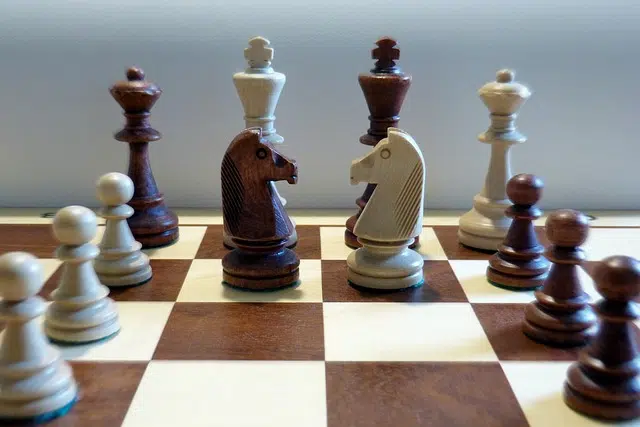
Each chess player starts the game with sixteen pieces.
Chess is a game that is played on a board and pits two people against each other. Each player has sixteen pieces that he can move, respecting certain rules, on the board that is divided into sixty-four squares, known as squares .
These pieces are a king , a queen , two rooks , two knights , two bishops and eight pawns . The objective is to overthrow the rival's king, for which it is possible to capture the various pieces of the opponent.
Game Features
The board alternates two colors on its squares, usually black and white. The pieces are also distinguished by color: one player starts the game with sixteen black pieces and the other with sixteen white pieces. The way in which each piece can advance around the board is defined by the regulations , and much of the essence of the game is found in the characteristics of its possible movements.
If a player manages to get one of his pieces to the square where his opponent's piece is, he can capture it . In this way, the opponent loses one of his pieces. The game is defined when a player ensures that the rival king cannot avoid a capture maneuver: this move is known as checkmate .
Although historically chess pitted one person against another, in recent decades technology has allowed the emergence of computer programs that, through various calculations, "play" chess, determining the movement of the pieces. In this way, a person can play against a computer, or it is even possible for two computer systems to compete against each other.
chess moves
Pawn
On the chess board, there is no weaker and more numerous piece than the pawn. Its most frequent movement is towards the front, one square at a time; However, the player who starts the game can take two steps at a time. One of its peculiarities is that it cannot capture other pieces in the same way it moves, unlike all the others, but must do so diagonally.
Bishop
Its movement is diagonal and there is no limit on the number of squares: as long as it finds empty spaces, it can continue advancing to the edge of the board. Something that follows from this rule is that the bishop can never step on a square of the opposite color to the initial one. As each player has a bishop on a black square and another on a white square, it is common to take advantage of this to name them, although they can also be identified according to their proximity to the king or queen.

The squares of the chess board are called squares.
Tower
It could be said that the rook is like the bishop but in a straight horizontal or vertical line. In addition to the orientation of its movement, a difference it has with the latter is that it can be positioned on any square on the board, something that makes it very powerful.
Horse
This is the piece that stands out the most in the group, since it is the only one capable of jumping over other pieces. Its movement consists of moving two squares in a straight horizontal or vertical line , and then moving one more square at a right angle, as if writing a letter L as it passes.
Queen
It is the most powerful piece in the game, since it combines the possibilities of the bishop and the rook.
King
Despite its importance, it is one of the least powerful pieces on the board. Its movements are limited to any of its adjacent squares, so it cannot advance more than one step at a time.
Particularities of the parts
Although each piece has an exclusive series of possible movements, it is important to note that there are certain similarities between them, something logical given the limitations of the board design . For example, all pieces except the knight must move along a line, be it diagonal, vertical or horizontal, while he must form an angle in his path, as explained above. Another common point that applies to all pieces is that none of them can move beyond the boundaries of the board, not even to return.
The knight is also the only piece that can pass over others: all the others need their path to be clear to advance, that is, both the final square and all the intermediate ones must be free for the movement to be considered valid. No piece can end up in a cell that is occupied by another piece of the same color.
